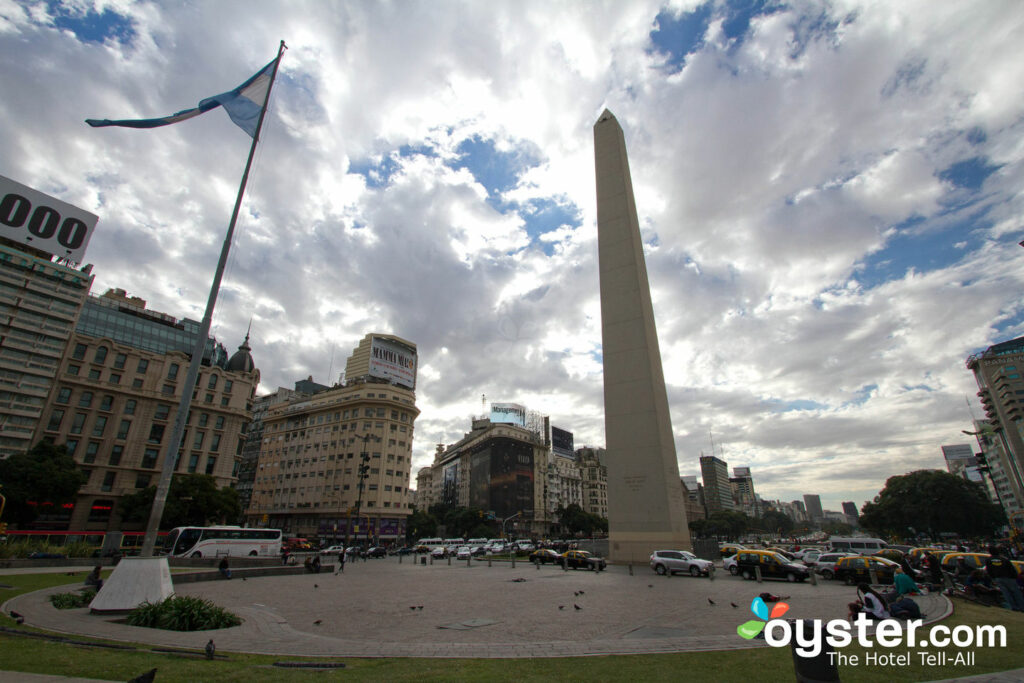
Forget what the travel guides say -- this isn't the “Paris of South America.” No shade to Paris, but those comparisons don't even come close to capturing the vibe of Buenos Aires. Sure, the sidewalks are nearly unnavigable and the traffic can be legendary, but Buenos Aires is its own unique destination. With fascinating history, graffiti-covered ambience to spare, a deeply rooted arts scene, inimitable nightlife, impeccable foodie culture, and everything from medialunas to late-night milongas, Buenos Aires has more than enough to grab any traveler's attention.
Why are we so keen on the city right now? For those in search of a bargain, the strong dollar and weak peso make this the perfect time to plan a trip. That fact -- plus typically lower airfares from the Northern Hemisphere during our summer months -- mean that Argentina’s most vibrant city is even more enticing than ever. However, it can take some firsthand knowledge to find the sweet spots in this sprawling metropolis, so read on to discover our favorite barrios and finds.
All Things Chic and Trendy in Palermo
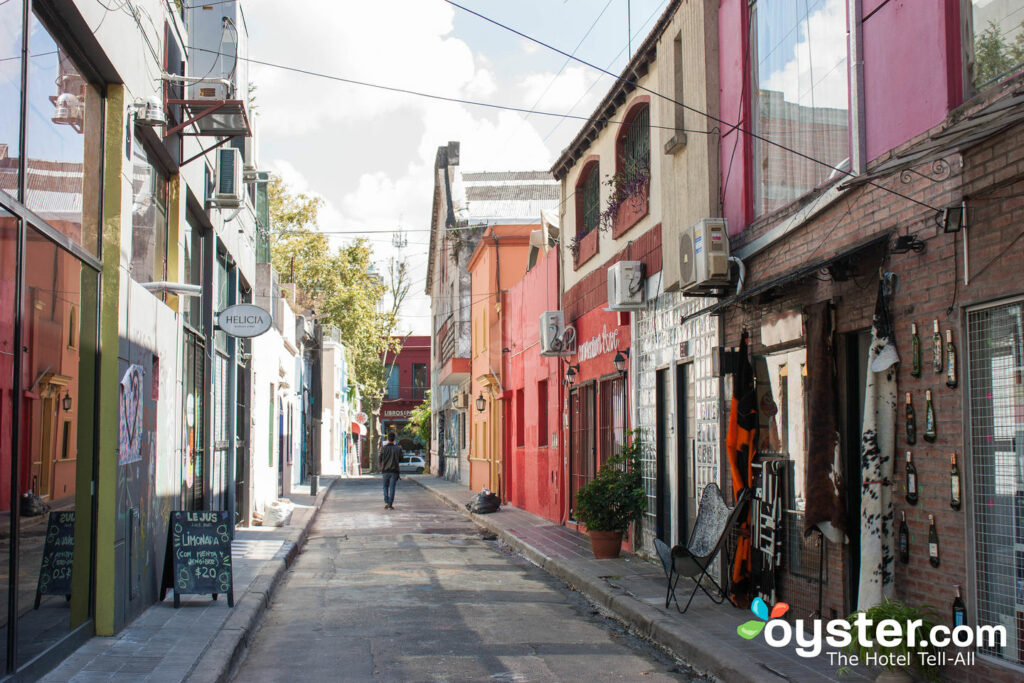
Ask anyone about their trip to Buenos Aires and the name Palermo will likely come tumbling from their lips. However, this hip barrio is actually a conglomeration of many different Palermos, and every few years real estate hawks seem to conjure up yet another, trendier subdivision within its borders. In any case, it’s a scene familiar to hipsters everywhere — expect to find artisanal everything, vegetarian-friendly dining spots, quaint boutiques, lively bars, and nightlife to spare. The frequently gorgeous architecture, armfuls of graffiti, and towering old-growth sycamores lend this large slice of the city plenty of charm and personality.
- Must Visit: There’s a reason why this neighborhood is so popular: There’s a lot to do here. From the 170-year-old Jardin Botanico to the lovely parks marking the northern boundary of the barrio — Palermo has room to breathe. Hop on an EcoBici — the city’s bike-share program — at Plaza Armenia or Plaza Italia for a lovely way to zip through all of the greenery. Still, it’s boho Palermo Viejo that we love most. Head to Plaza Serrano or Plaza Armenia, and wind through the grid of streets between and around them to find a dizzying array of shops, bites, and beverages.
- Must Stay: It’s hard to beat the style, charm, and attention to detail at the intimate Legado Mitico Buenos Aires. With just 11 rooms, this chic little spot feels like staying in an upscale home, with individually decorated rooms that blend modern and traditional styles. It’s also located right in the middle of Palermo Viejo, just a five-minute walk from Plaza Serrano.
A Taste of History — and Excellent Antiques — in San Telmo
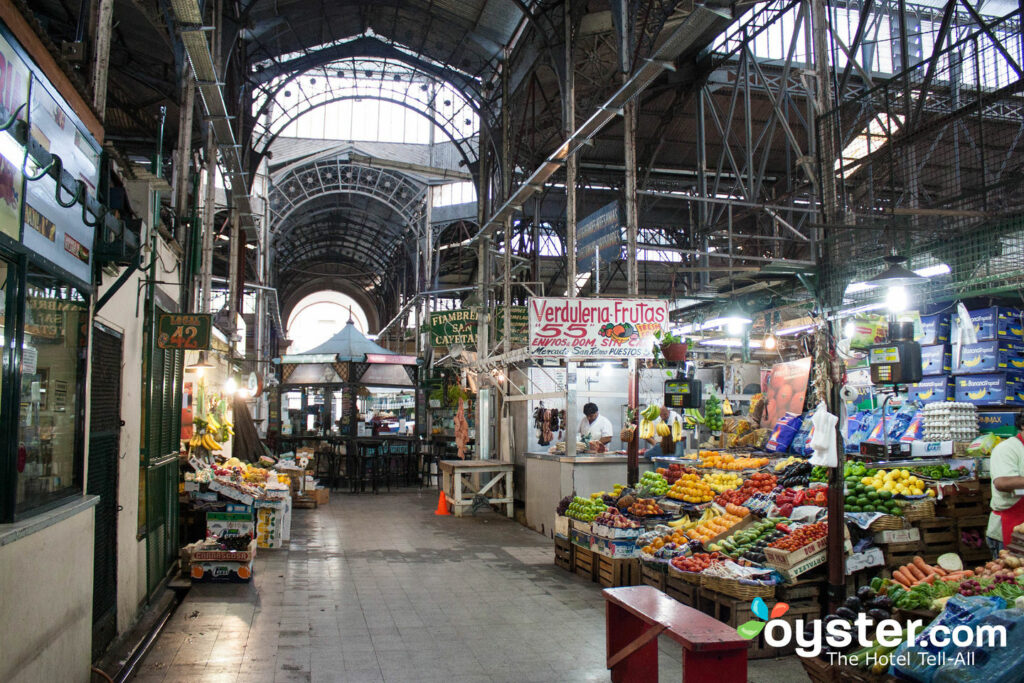
Wedged between a rusting elevated freeway and the business district, this is Buenos Aires’ oldest neighborhood. During a yellow fever outbreak in the 19th century, the rich fled San Telmo; those with lesser means moved into the mansions and palaces, carving them up into the smaller tenements that still exist today. The neighborhood has a scruffy charm, and is packed with buildings dating back hundreds of years — some gleaming and some falling apart. Add to that several art galleries, scenic antiques and produce markets, chic dining clubs, boutiques, and cafes (including LGBT-friendly Pride Cafe), and San Telmo deserves its place near the top of our list.
- Must Visit: This barrio is best known for its Sunday market — the Feria de San Telmo. A sprawling array of street music, antique and junk vendors, food sellers, and tango performances, it draws thousands of visitors every week, and has been doing so for almost fifty years. All along Calle Defensa and into Plaza Dorrego there’s plenty of excellent people watching — and lots of bargains as well.
- Must Stay: For something with a bit of historic flair, we love Moreno Hotel Buenos Aires. It’s housed in a renovated 1920s-era Art Deco factory and its varied vintage and minimalist interiors are impeccably chic. With reasonable rates and an excellent location — it’s less than a five-minute walk from the Sunday market — this is one of the area’s best values.
Rub Elbows with the Rich — Both Living and Dead — in Recoleta
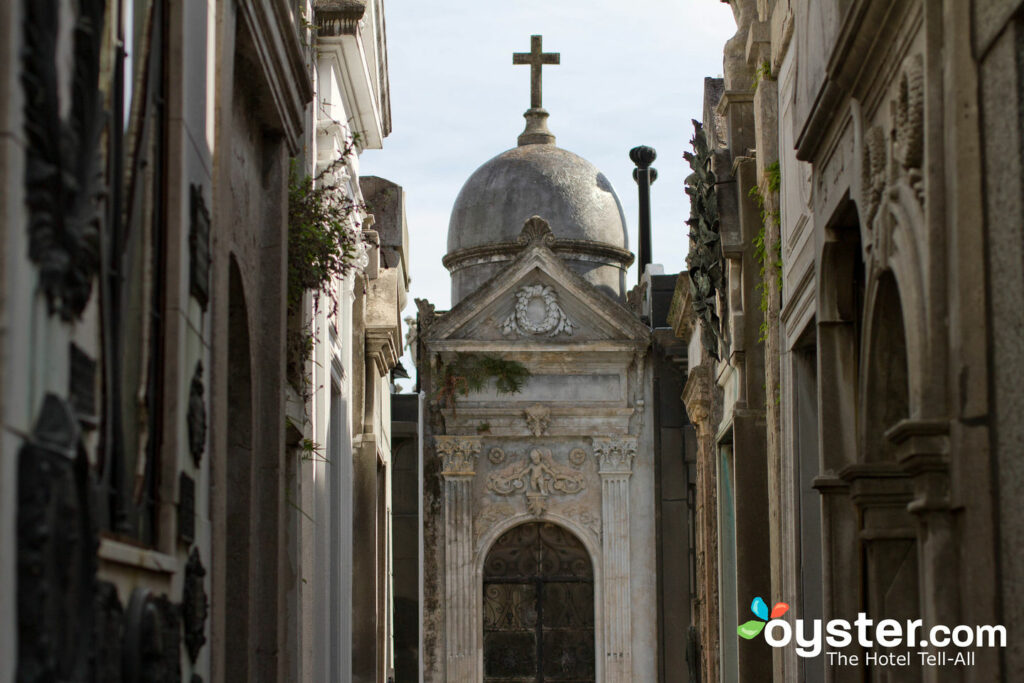
Keep your ear to the ground while walking this neighborhood’s grand boulevards — you just might hear the sound of money. Recoleta is one of Buenos Aires’ wealthiest neighborhoods, though it’s by no means a secret to tourists, either. Most visitors to the city will spend at least some time in Recoleta during their visit. Upscale shopping, Old World cafes, and several museums are all major draws, and for those seeking culture, the Museo Nacional de Bellas Artes is a highlight — it’s home to works by Goya and Titian.
- Must Visit: Luxury shopping and dining aside, Recoleta is most famous for the dead. That’s because Cementario de la Recoleta is the final resting place of some of Argentina’s most famous citizens. The frequently ornate, often stunning, and sometimes decayed mausoleums of authors like Adolfo Bioy Casares and Silvina Ocampo — plus numerous former heads of state — make this a top destination for Buenos Aires visitors. However, it’s the grave of Eva Peron — Evita — that many come to see. Deceased in 1952, the former First Lady of Argentina still receives flowers at her grave.
- Must Stay: In a posh neighborhood like Recoleta, it’s only natural to crash in equally high-end digs. Mio Buenos Aires is a fine place to rest at night, with its marriage of boutique charm and intimacy, plus luxury details like Frette linens and carved wooden bathtubs. At just a 10-minute walk from the cemetery and Museo Nacional de Bellas Artes, the location is hard to beat, and rates can be lower than nearby luxury properties
It's Not All Business in the Centro
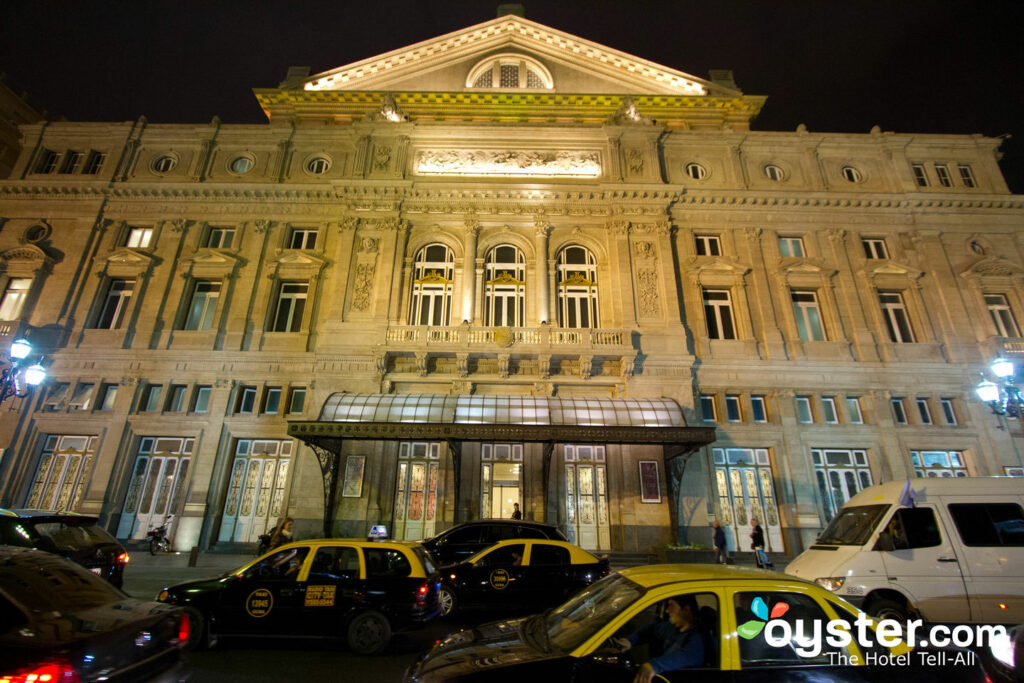
There are few business districts in the world that merit much attention — you don’t see tourists flocking to La Defense in Paris, after all — but Buenos Aires’s Microcentro is an exception. The Centro, as the locals call it, is worth a visit, day or night. When the sun is still high, cafe waiters zip trays of cafe con leche across busy, potholed streets while pedestrian malls and shops of all kinds buzz with activity. Within this warren of tightly packed buildings is a good dose of traditional Porteno charm, as well as plenty of modern-day energy. Nightclubs like Bahrein call the area home, as well as food from across Latin America, like the down-home Peruvian cuisine at Chan Chan. Those seeking more monumental treats can ogle the Obelisko or try to cross Avenida Nueve de Julio — reportedly the world’s widest avenue — in one go.
- Must Visit: Most travelers passing through the Centro do so on their way to Casa Rosada — Argentina’s White House. Evita, of course, looms large over Casa Rosada, and free tours are offered throughout the day. However, Plaza de Mayo is arguably the more interesting sight, historically speaking. Protests here have had a major impact on Argentina’s story for centuries, from ushering in the era of Peron to serving as a constant reminder of the country’s past. The Mothers of the Plaza de Mayo still regularly gather in the plaza to seek answers about family members who disappeared without a trace during Argentina’s Dirty War in the 1970s and 80s.
- Must Stay: Vista Sol Buenos Aires Design Hotel is stylish and simple. The look throughout blends urban materials with details like warm hardwood and black-and-white photography. The spacious fitness center and happy hours in the lobby bar are nice bonuses for such a compact hotel as well. It’s fewer than two blocks from pedestrianized Calle Florida, and a 15-minute walk from Casa Rosada and Plaza de Mayo.
Get That Locals-Only Vibe in Villa Crespo (For Now, Anyway)
https://www.instagram.com/p/BE4C4u3v_wK
Hurry — there’s only so much time before Villa Crespo becomes just one more branch of the Palermo real estate brand. As anyone familiar with New York City real estate — or any major city’s housing market, really — can tell you, artsy and scrappy districts can become prohibitively expensive almost overnight. And this is to say nothing of gentrification’s impacts on already existing communities. For better or worse, Villa Crespo is a hot commodity at the moment. There are no major sights here, but it’s one of the most cosmopolitan areas of town, with different cultures mingling in streets that still feel decidedly Old World and Argentine. From famous leather-makers like Murillo 666 to major outlet shopping, or from down-home restaurants to authentic Asian plates, Villa Crespo can give you a true glimpse into contemporary life in Buenos Aires in just a few days.
- Must Visit: Villa Crespo isn’t known for blockbuster sights, but if you’re staying in this neighborhood, the shopping and foodie pursuits are hard to beat. Fine cocktail bars like Ocho7Ocho and pan-Latin American fusion at i Latina make Villa Crespo all the rage right now. For something a little more lively, hop a five-minute cab ride east to the Ciudad Cultural Konex. On Mondays, sip a Quilmes while waiting in line for Bomba del Tiempo, a group of musicians that gets the crowd dancing with insane drum routines. For something a little closer to home, Milonga 10 is a truly authentic tango hall that’s packed on Saturdays.
- Must Stay: For now, there aren’t too many options for bedding down in Villa Crespo, though that will surely change as everyone is priced out of neighboring Palermo. Thankfully, Pop Hotel is a relatively cheap and exceedingly cheerful place to crash in this in-the-know barrio. Bright colors are paired with eye-catching patterns and understated graphic-inspired art to create an upbeat vibe, near the neighborhood’s outlets and a quick walk to Palermo.
Now read our complete Buenos Aires travel guide (with hundreds of tips and pics) >>
You Might Also Like:
- Over the Summer Heat? 8 Destinations Where It’s 50 Degrees or Colder Right Now
- The 5 Most Romantic Hotels in Buenos Aires, Ranked
- 9 Awesome Honeymoon Trips No One Takes
All products are independently selected by our writers and editors. If you buy something through our links, Oyster may earn an affiliate commission.



